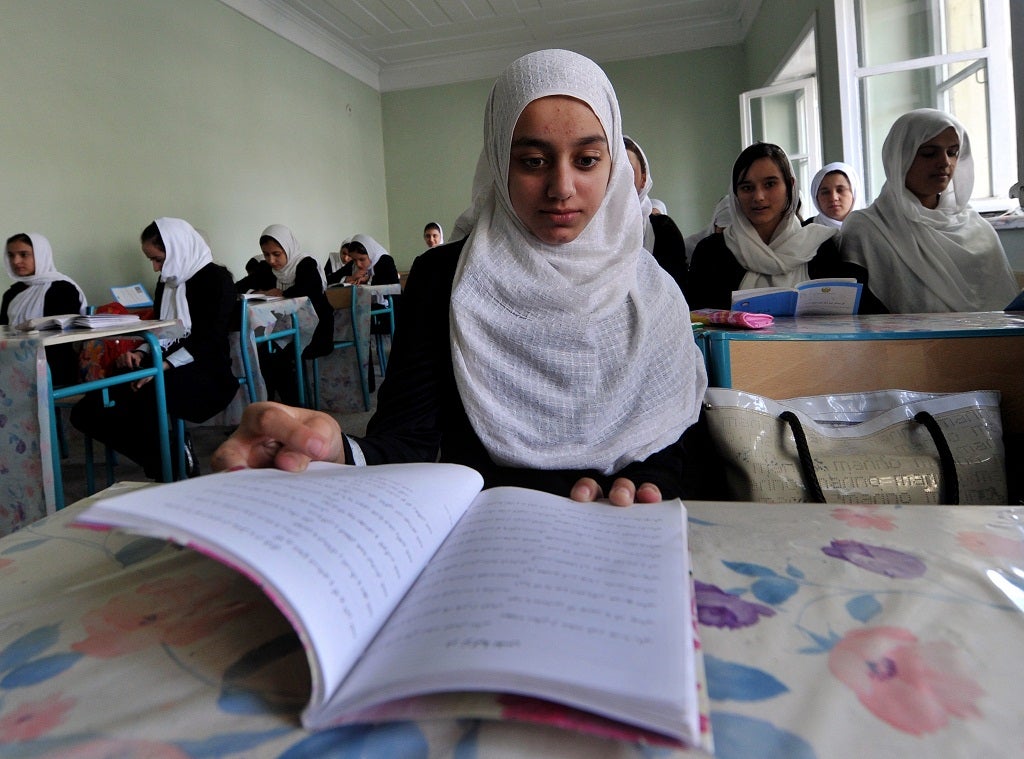UN Day of the Girl: What will it take to invest in a female future?
The shooting of a girls' rights campaigner brings into cruel focus the struggle to educate girls in the developing world - and the vital benefits this education can bring

Two days ago 14-year-old Pakistani Malala Yousafzai, a prominent campaigner for girls’ rights, was shot in the head by the Taliban. Fortunately she survived. But this horrific incident of puts into perspective the issues and challenges that girls in Pakistan face to obtain their basic right to education.
There are brave girls like Malala, who have spoken out and demanded this right. And today is the first-ever UN Day of the Girl.
This is the time to take forward Malala’s message and ensure that all children, especially girls, are given the opportunity and safe environment for their education.
The power and potential of girls has been recognised as never before. The argument that investing in girls’ education is a smart thing to do has been won - yet 75 million are still out of school.
Is winning the argument enough to tip enough investment into their education?
75 million is more than the entire population of the UK. Failing to educate our population would be economic suicide – and the world’s poorest countries are losing £58 billion every year by not educating their girls.
Economists and development experts have shown convincingly that failing to educate girls makes the world a poorer place, limiting not just her potential but that of her community in terms of economic wealth and social justice. The evidence is that girls who stay at school have smaller families and those families are better off - so giving girls their right to education helps boys too.
These arguments are now the new orthodoxy, accepted by the governments around the world. Whether they decide to remove barriers to girls’ education - poverty, attitudes, poor quality teaching - will affect millions of lives, lives like that of Nargis. A year ago, she became the seven billionth human born on this planet in a village near Lucknow, India. Will Nargis’ life be different from that of her poor farmer parents, Vinita and Kumar?
She has already beaten the odds by being born. A preference for sons means fewer girls than boys are born in her state of Uttar Pradesh because of sex selective abortions .
At six, will she go to primary school? One of the big successes of development is that now, worldwide, almost as many girls as boys are enrolled in school - but enrolment is not enough.
A quarter of girls in Uttar Pradesh drop out because parents cannot afford the fees – a problem that costs the Indian economy, as a whole, more than £6 billion in income during a girl’s lifetime.
Investing in well-targeted scholarships or child benefit conditional on school attendance is a cost effective way of keeping poor girls like Nargis in school.
At 12, she has a 50:50 chance of either passing her exams and moving on to secondary school or of leaving primary school illiterate, and failing admission. Without good quality teaching, enrolment isn’t enough; and good teachers themselves can’t do much if girls are too busy with housework to do their homework.
When Nargis reaches adolescence, a personal tipping point is likely to come. And that depends on whether she is seen as a breeder or a learner. Will she learn the skills she needs for life at school? Or be taken out of school to get married and be a mother?
Her chances are 50:50. Half of girls are married before the age of 15 in Uttar Pradesh, while more than one in ten are mothers before 15. Throughout the developing world childbirth is the leading cause of death for girls between ten and 15.
But attitudes that see girls’ place in the home as a carer, not in school as a learner, are changing.
Nargis’ parents are clear they want a good future for their daughter - as a doctor or teacher, perhaps.
But the evidence proves they cannot accomplish this alone. For the last five years, the annual report on the State of the World’s Girls has been following a cohort of girls from poor families in nine countries. All want a better life for their daughters but family after family is knocked back with no school nearby or no money for fees.
So, on this first ever Day of the Girl, we should all stand up for girls’ right to education. We must get the Secretary General of the UN to put girls high on his new education initiative. Governments and donors must commit to nine years’ quality education for girls. And education money should be allocated to schools that are girl-friendly.

Join our commenting forum
Join thought-provoking conversations, follow other Independent readers and see their replies